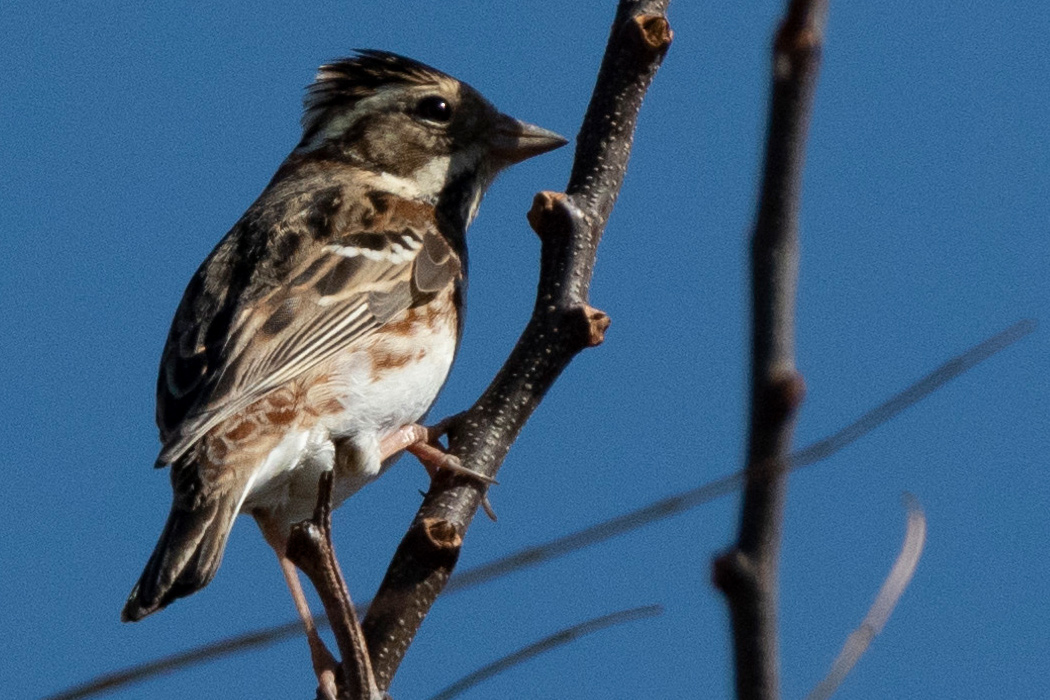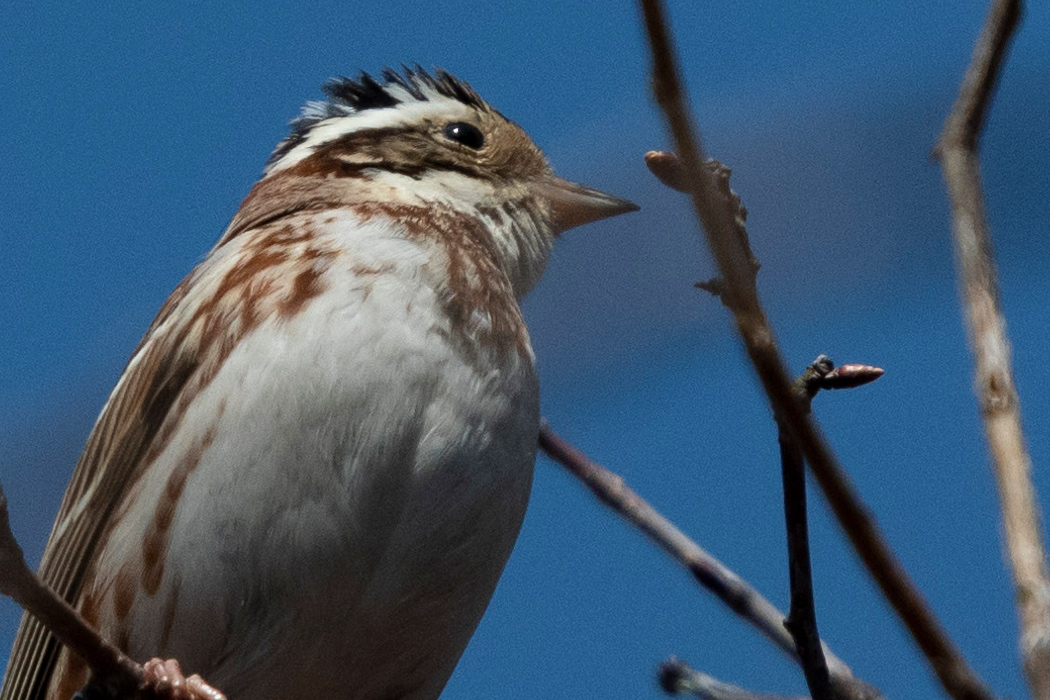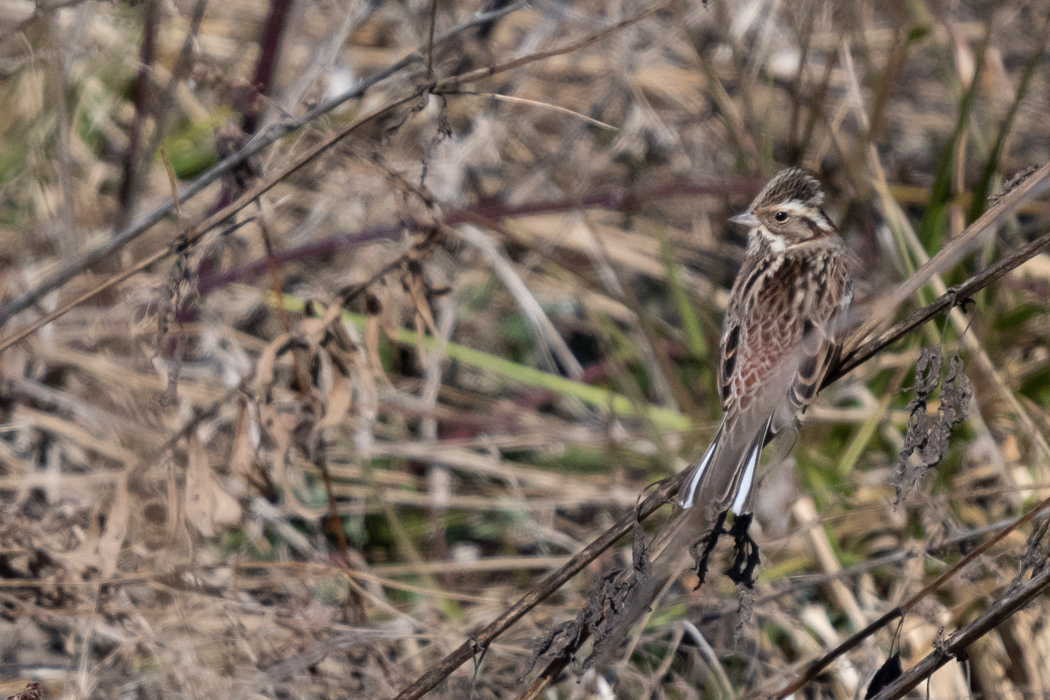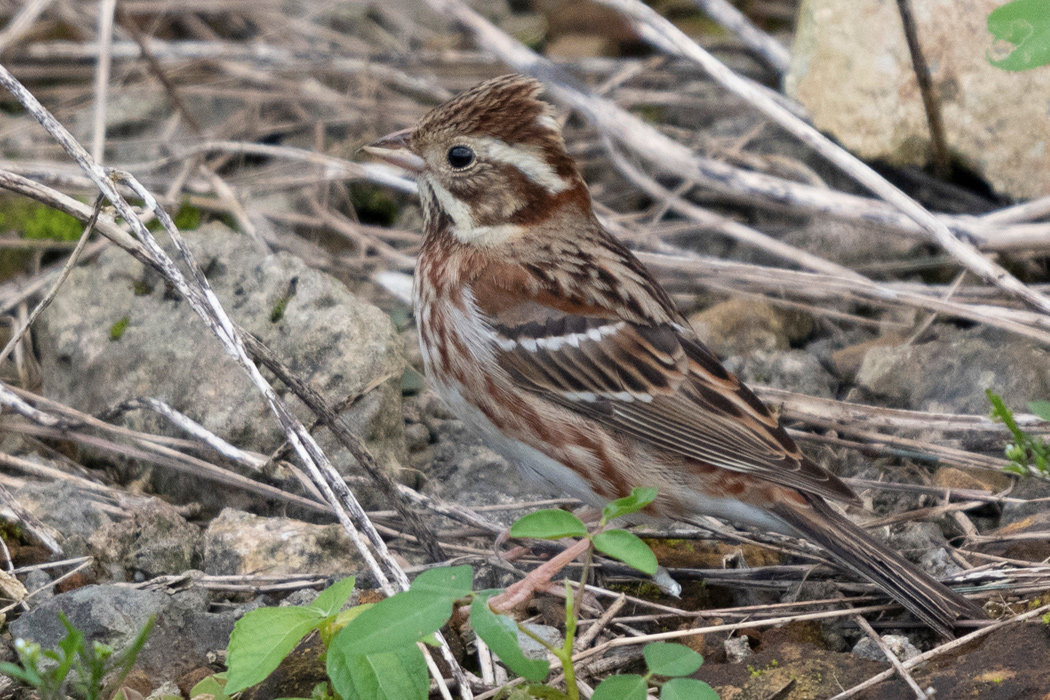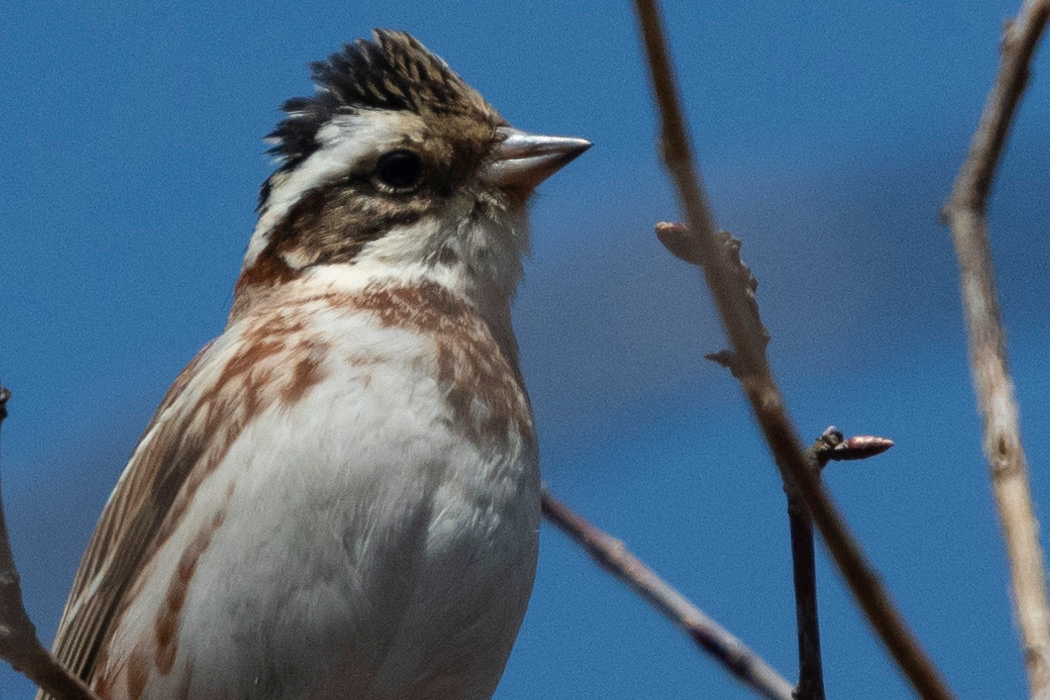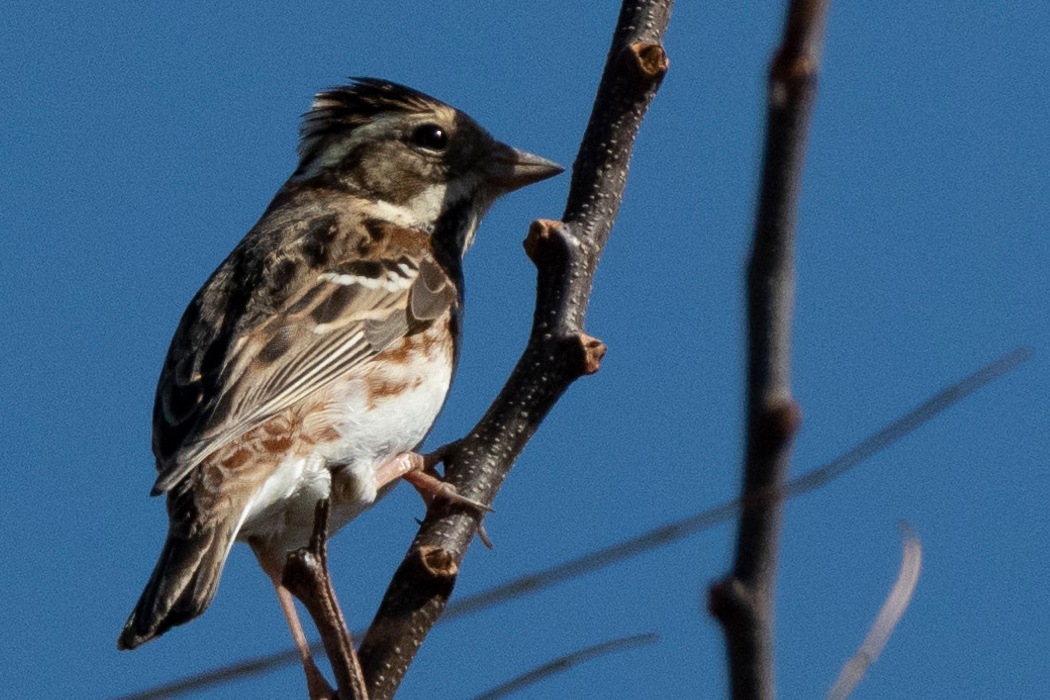
Rustic Bunting
Characterized by bristling feathers on the top of the head.
| Scientific name | Emberiza rustica |
| English name | Rustic Bunting |
| Japanese name | 頭高 |
| Classification | Aves |
| Classification details | Passeriformes Emberizidae |
| Full length | 15cm |
| Distribution | It migrates south in winter from high latitudes of the Eurasian Continent. |
Characteristics
A bird of the bunting family with a distinctive ruffled crest. The upperparts are brown and the belly is white. A brown band runs across the upper chest and around the neck. A reddish-brown vertical stripe runs along the edge of the belly. Much like a bunting, the eyebrows and throat are white, and the area around the eyes is brown. The beak and feet are pale pink.
In the winter plumage, the head is light brown, but in the summer, the male's head becomes darker from Kanu to the area around the eyes.
Calls
The squealing of the Kashiradaka is a small “tick-tick” sound that resembles that of a bunting. The chirping is "fee chori chori" with a quick whisper.
Identifying Casiladaka and Bunting
Not only are buntings (especially females) very similar in appearance, but they also live in similar habitats, making it difficult to distinguish them at first glance. The feathers on the parietal part of the bunting often stand on end, so you can't decide just by looking at the silhouette.
The point is the color of the belly. The bunting is brown up to the belly, while the chest is white in the cassilla. Therefore, when viewed from a distance, the color of Kashiradaka appears pale. In flight, if you pay attention to the color of the flanks, the bunting looks like an orange-brown color, while the cassilla-like one looks like a sand-brown color. It is difficult to distinguish them easily, so it is necessary to observe and get accustomed to them in places where both buntings and turkeys are present.
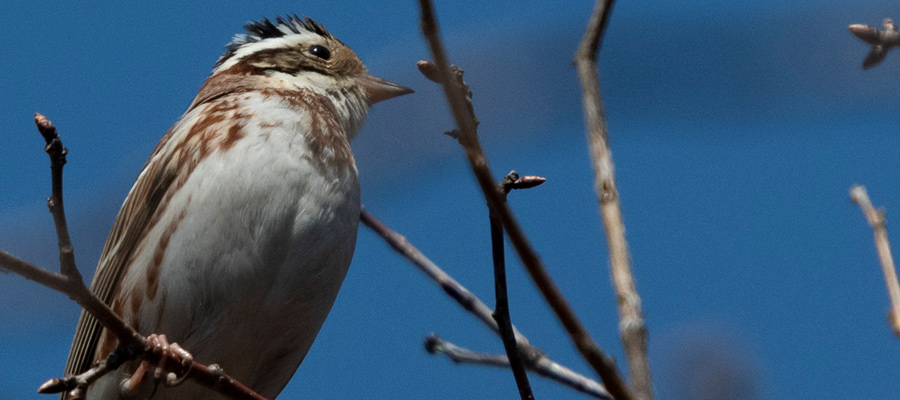
Ecology
Inhabit flat grasslands, reeds, and farmlands. Outside the breeding season, they move in groups and eat plant seeds on the ground. When it senses danger, it jumps up on a tree to warn. In Japan, it can be observed in winter in environments where other bunting birds such as bunting and blue-faced bunting live.
Habitat
This photo was taken on the riverbed of Asakawa, Hachioji City. There were many buntings in Ashihara, but there was one with a slightly pale color, so when I looked closely, it turned out to be a prickly pear.
My impression is that when the bunting is perched on reeds or trees, it feels like it is in the underbrush near the ground. After the bunting has escaped, I see it jumping out of the bush.
Pictures
Introducing a picture of Rustic Bunting.
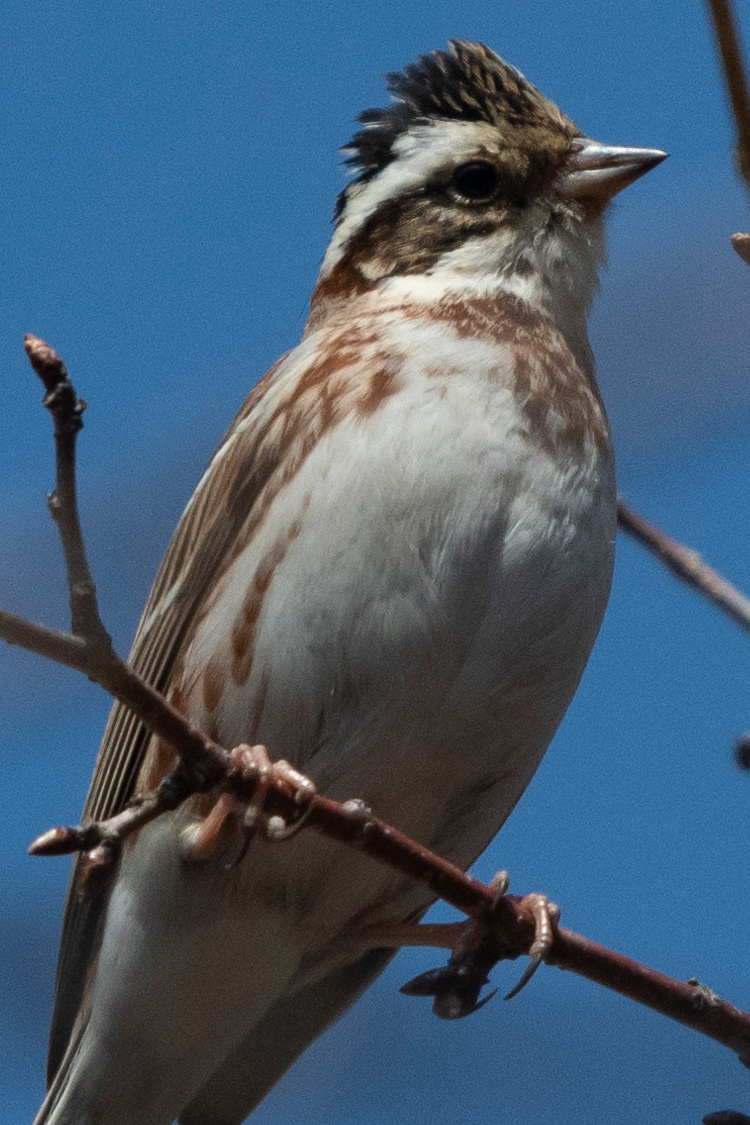
Picture book

Seven-spot ladybird
Its red wings have seven spots.......ead more.

Japanese Pygmy Woodpecker
A small woodpecker that you can meet up close.......ead more.

Pale Thrush
Lurking in winter bushes.......ead more.

---
has streaks like stone cliffs.......ead more.

---
Interesting name, but poisonous species.......ead more.
